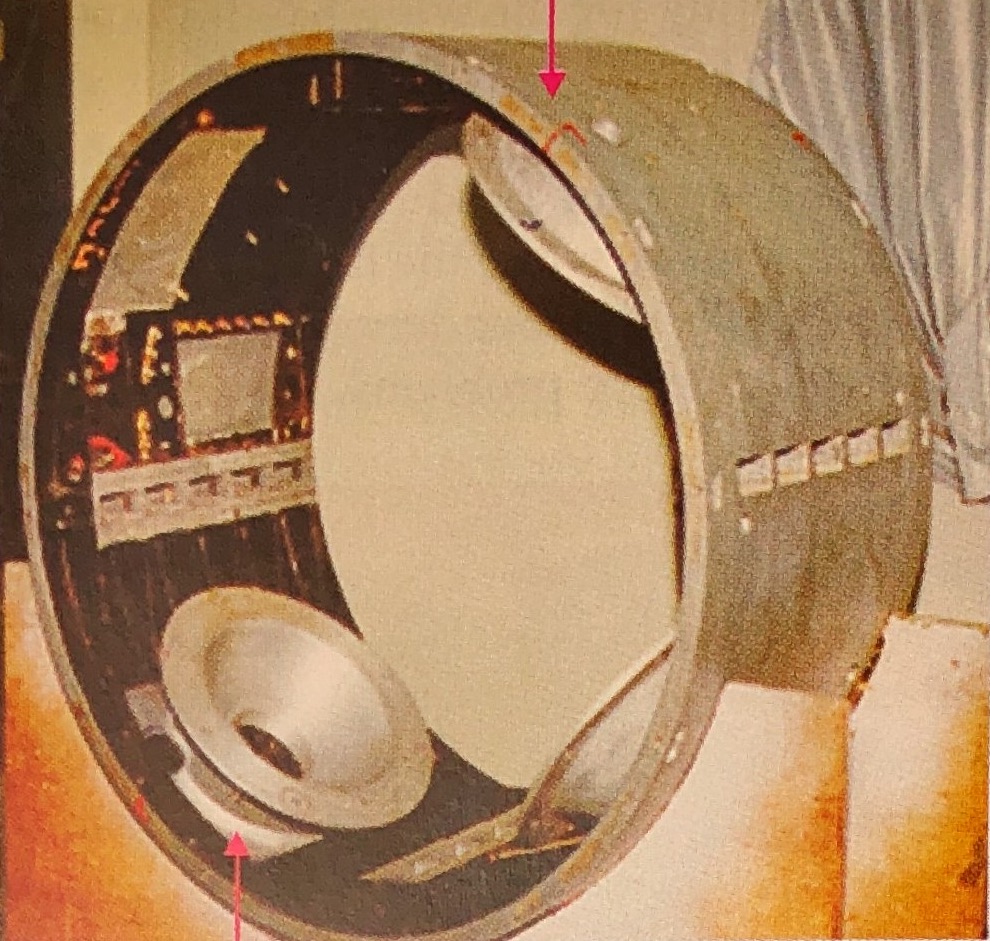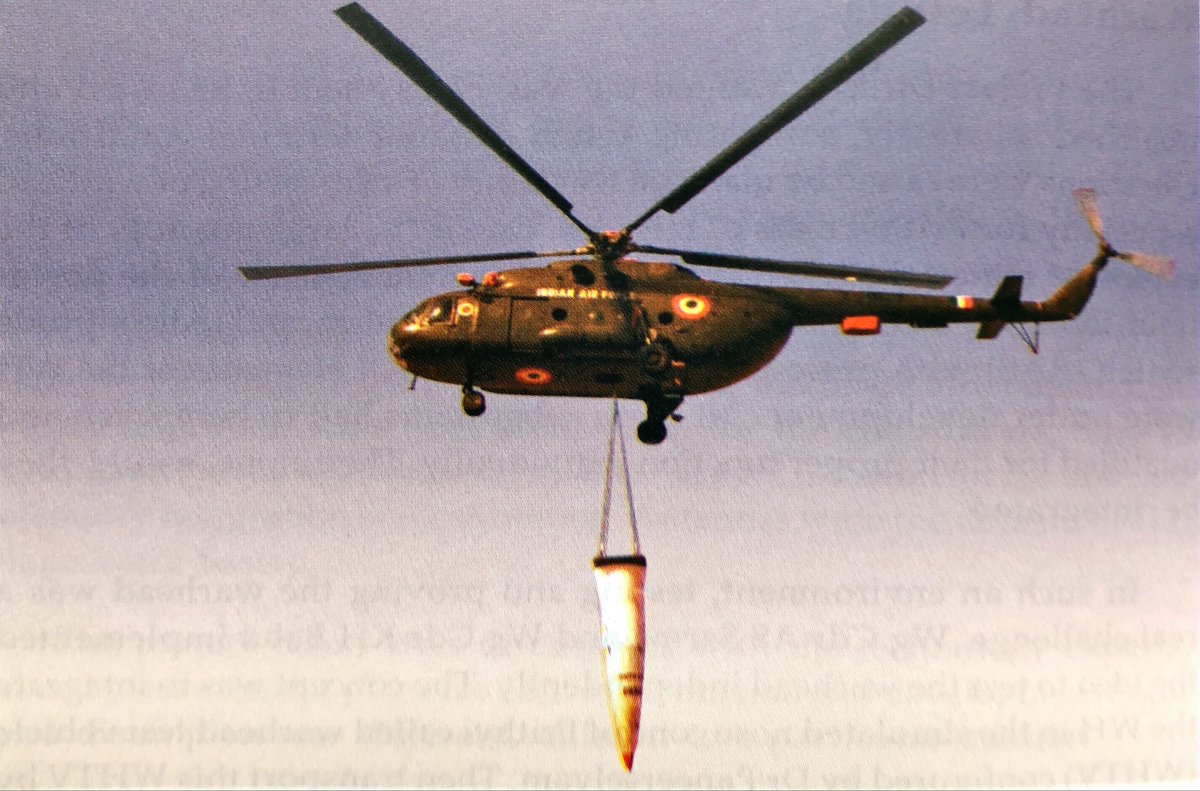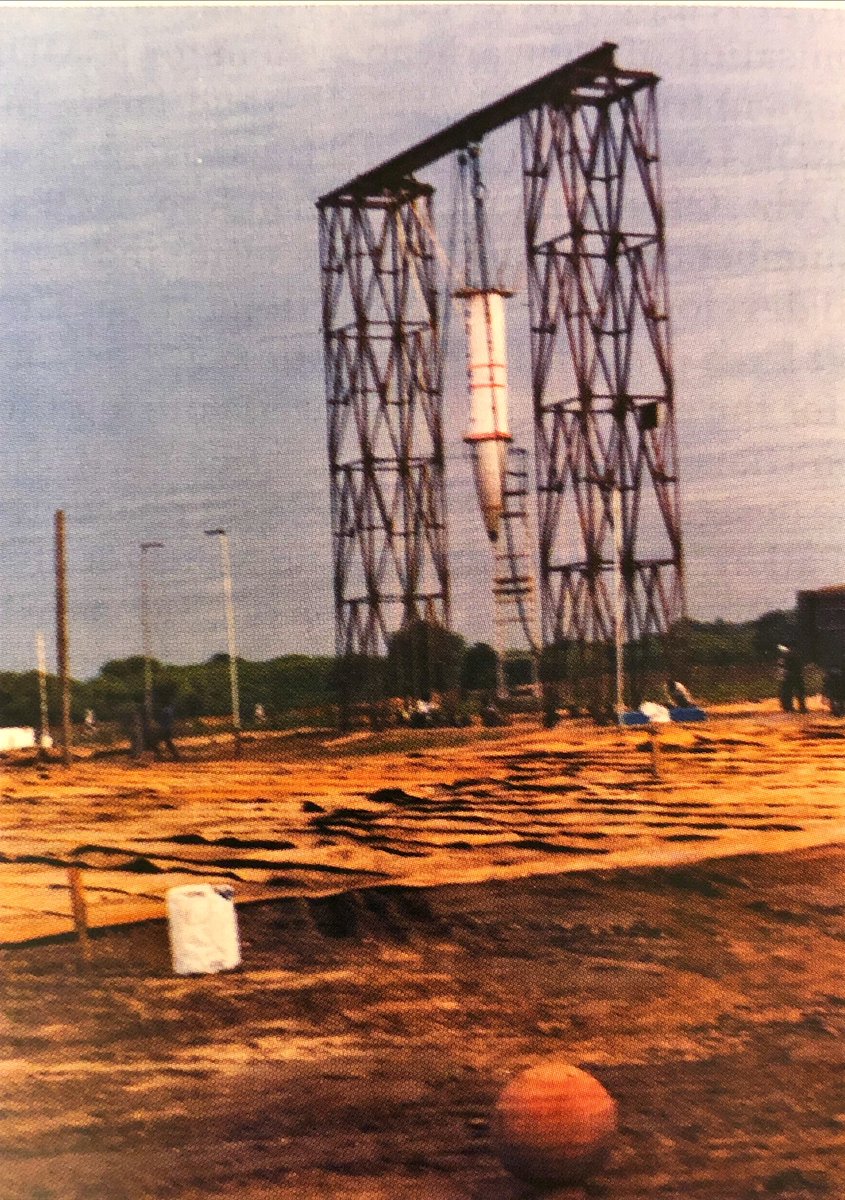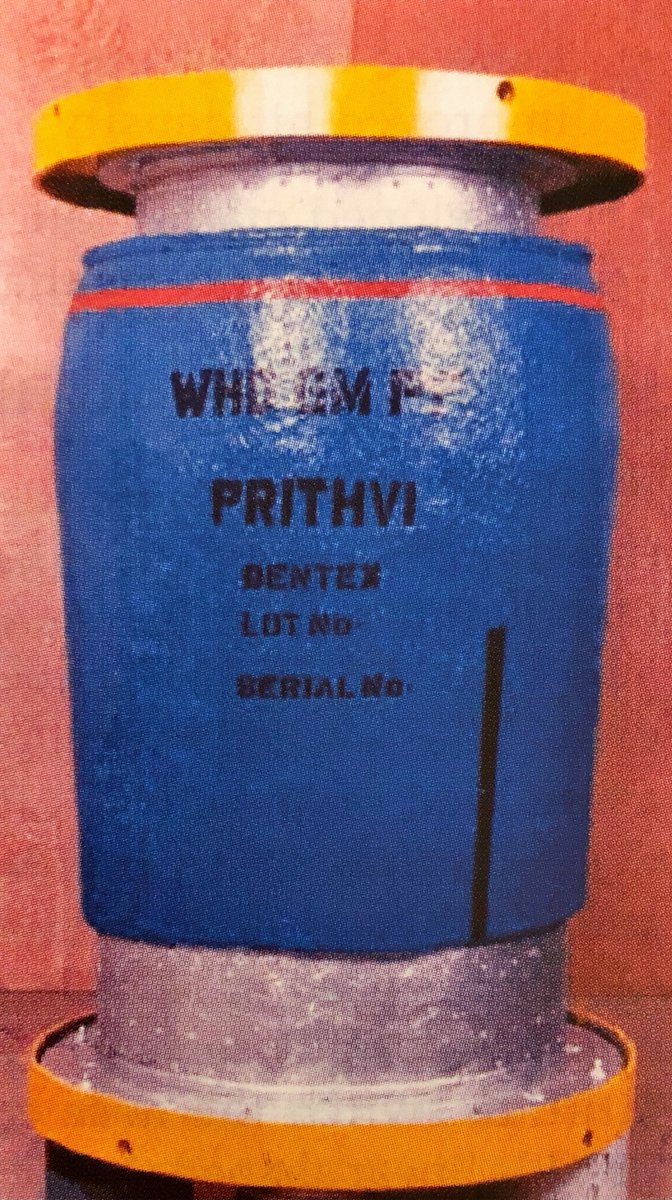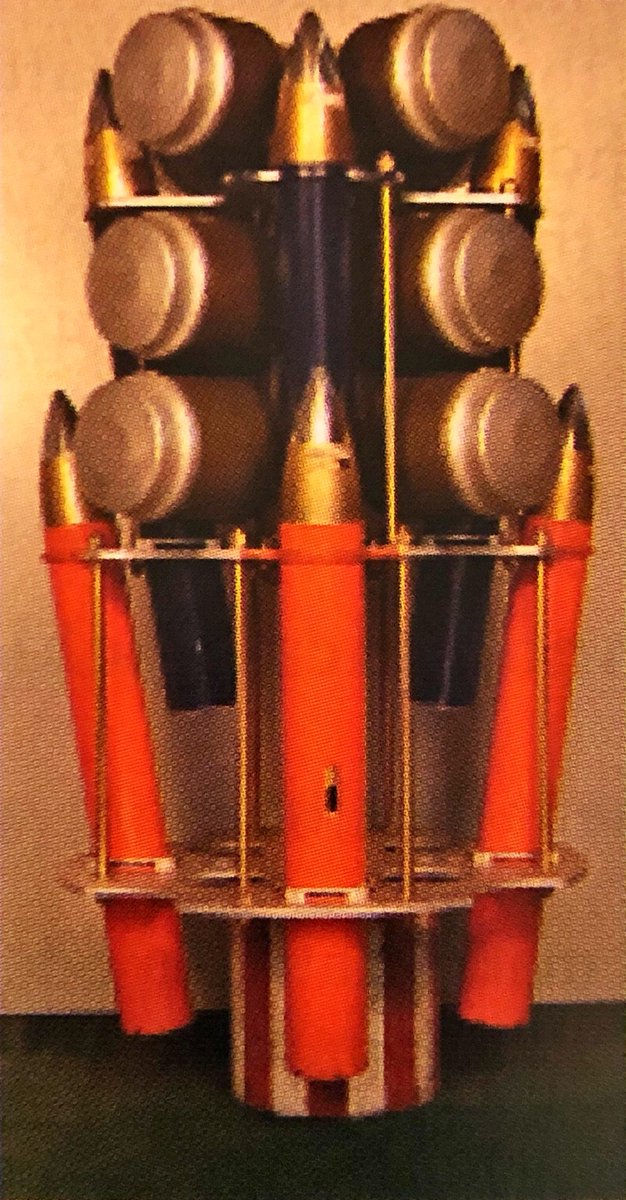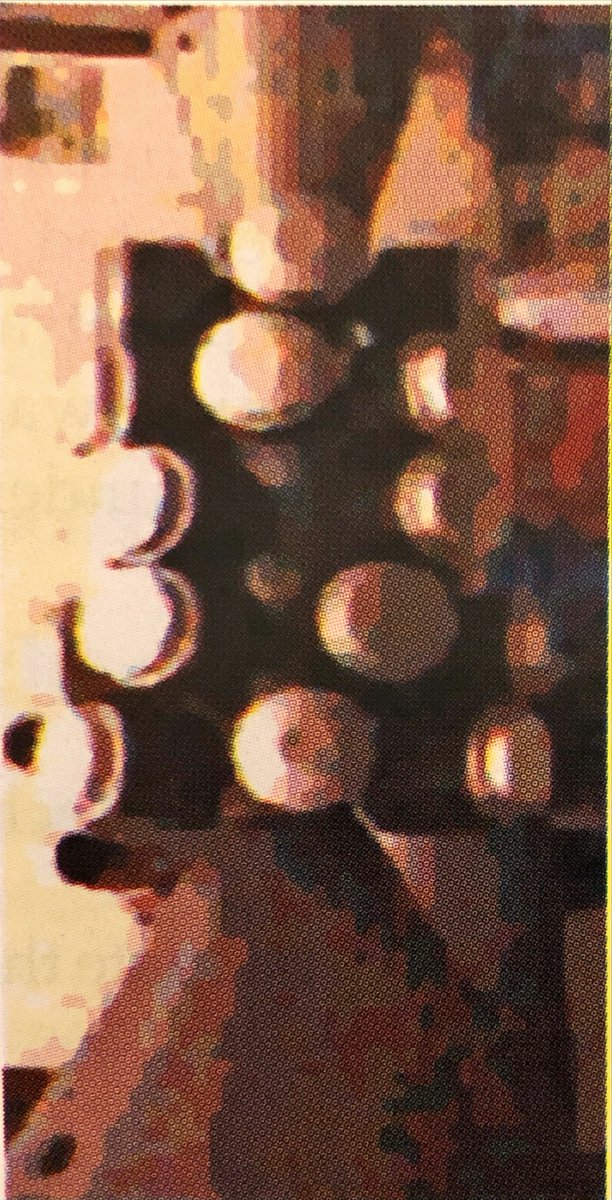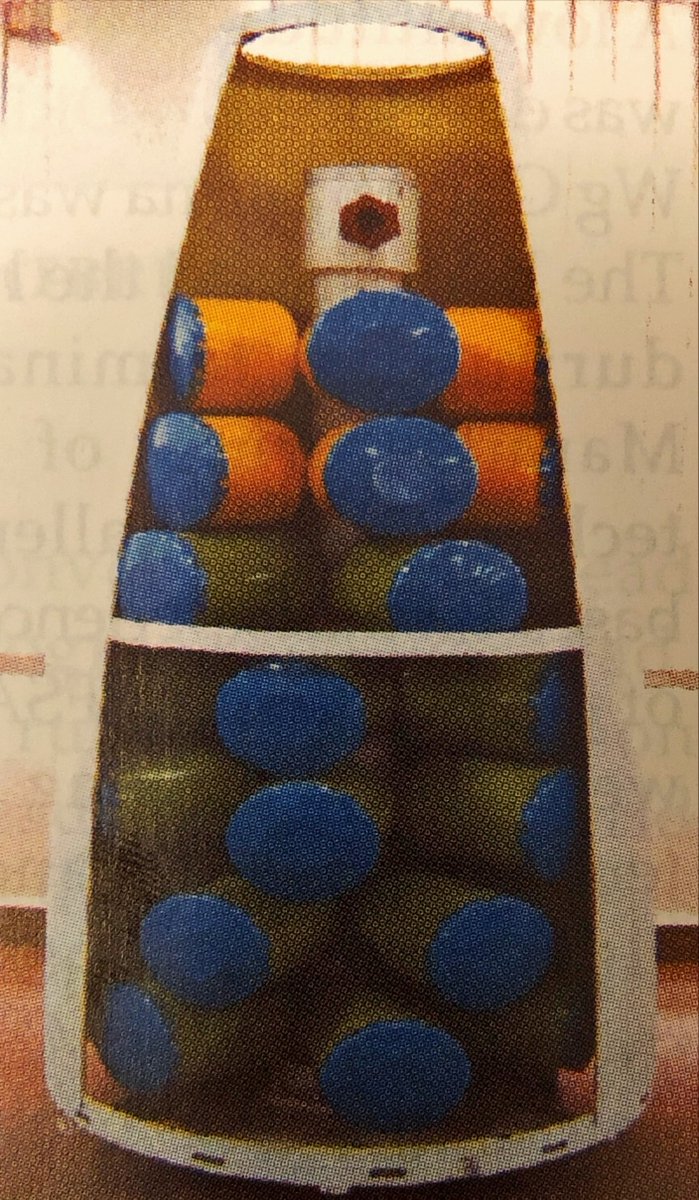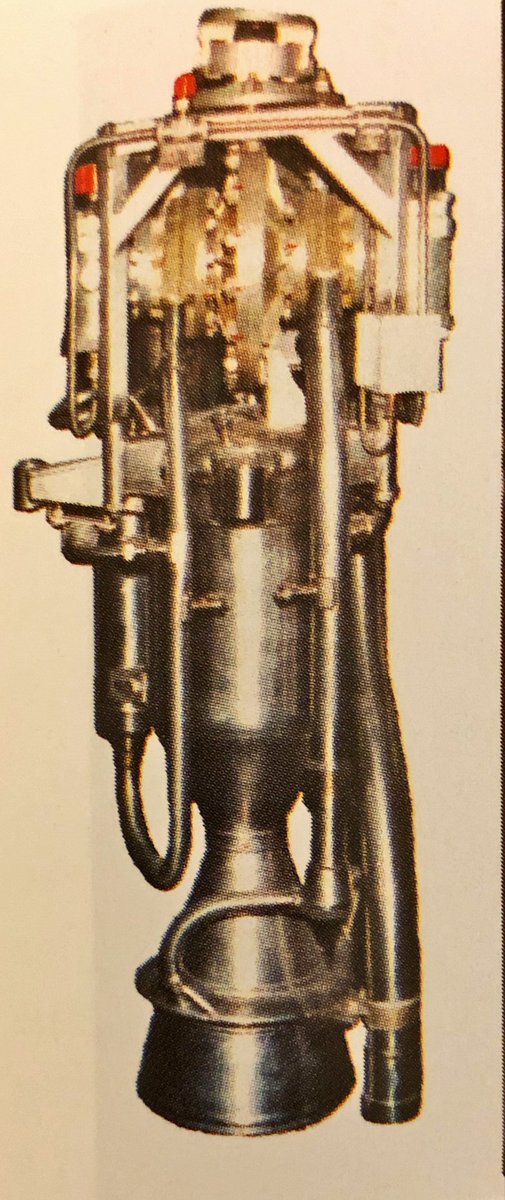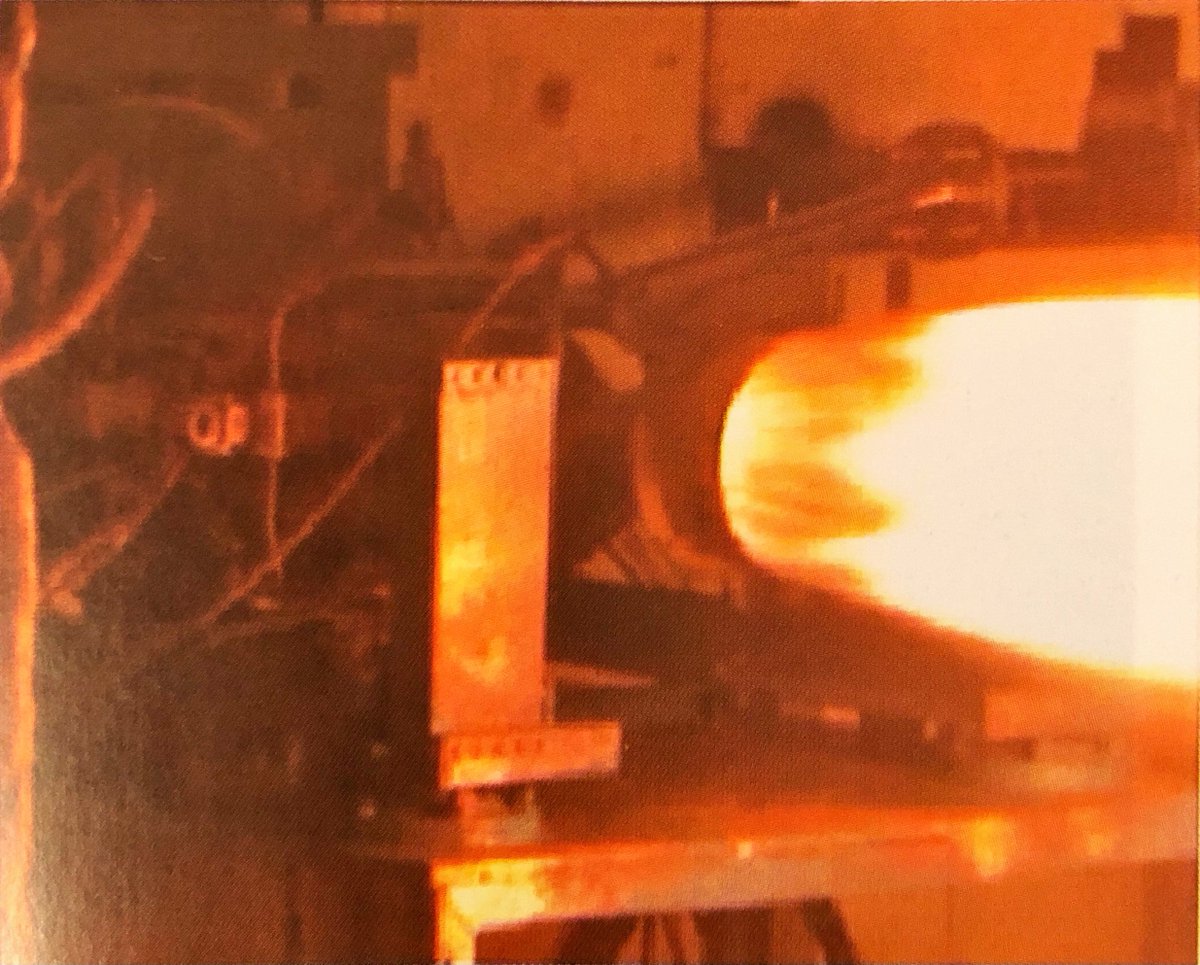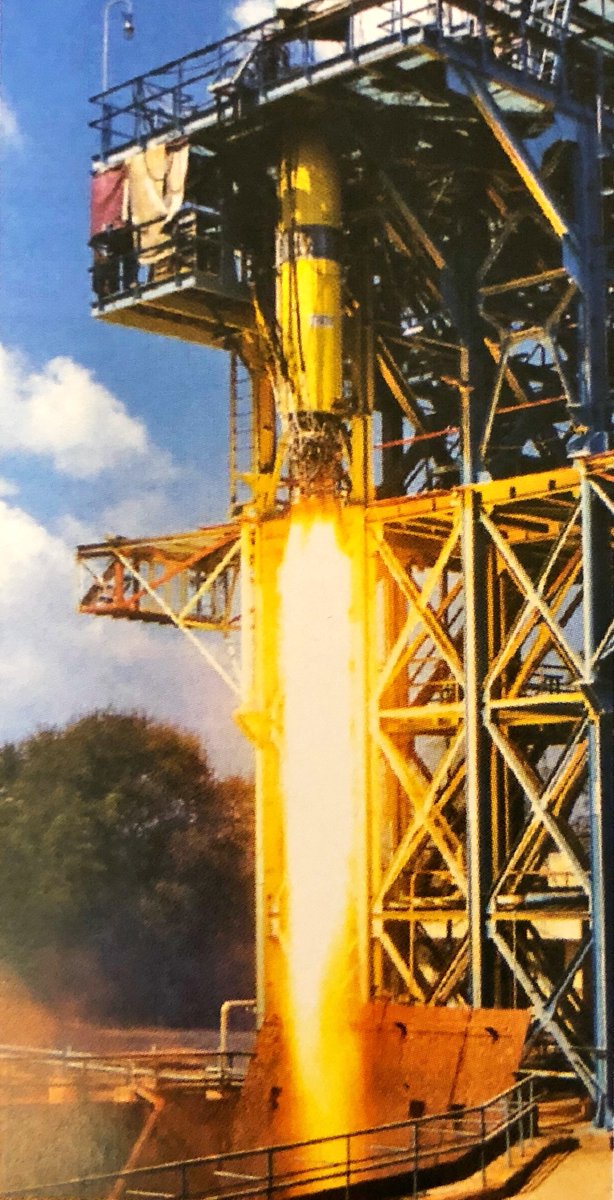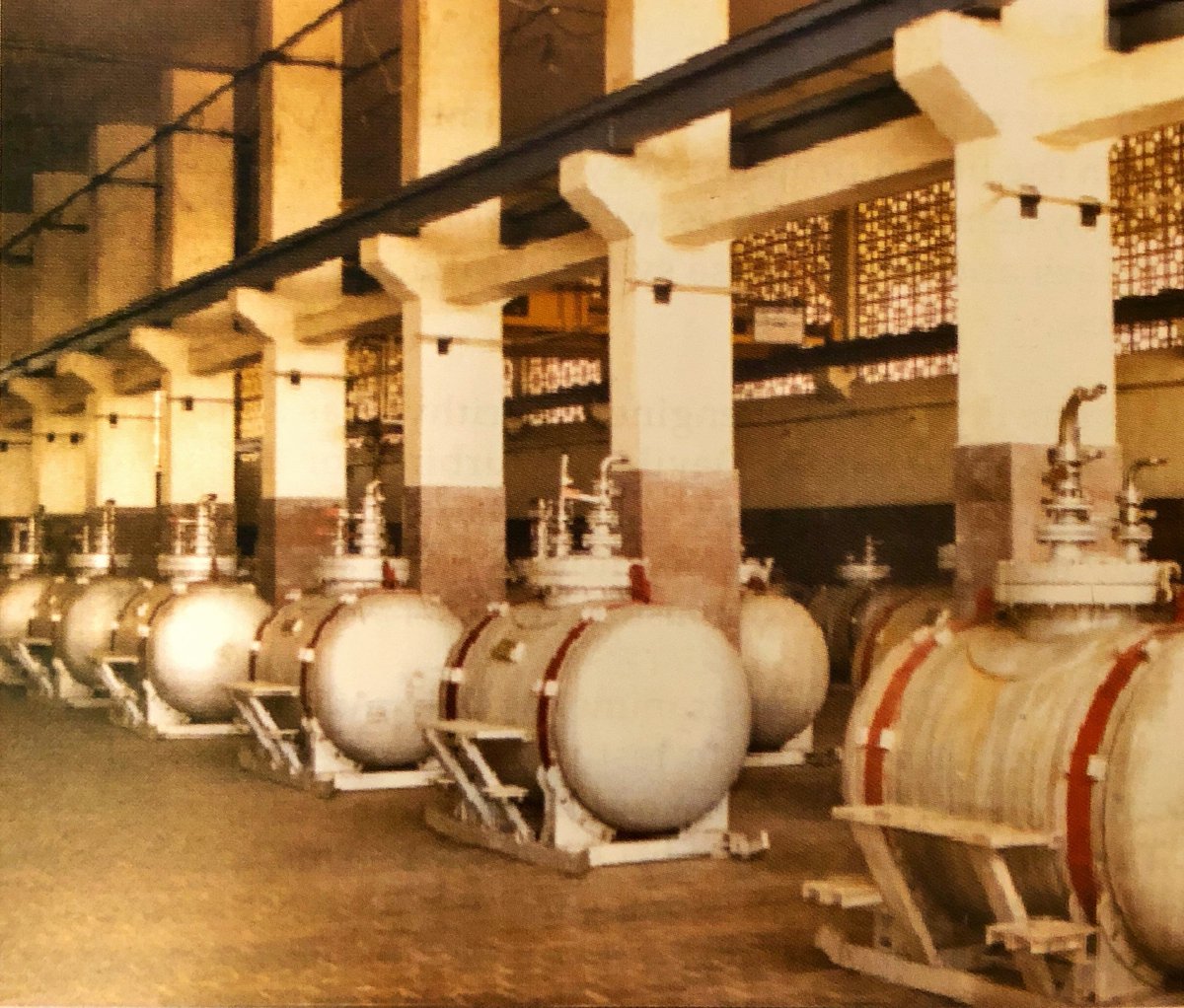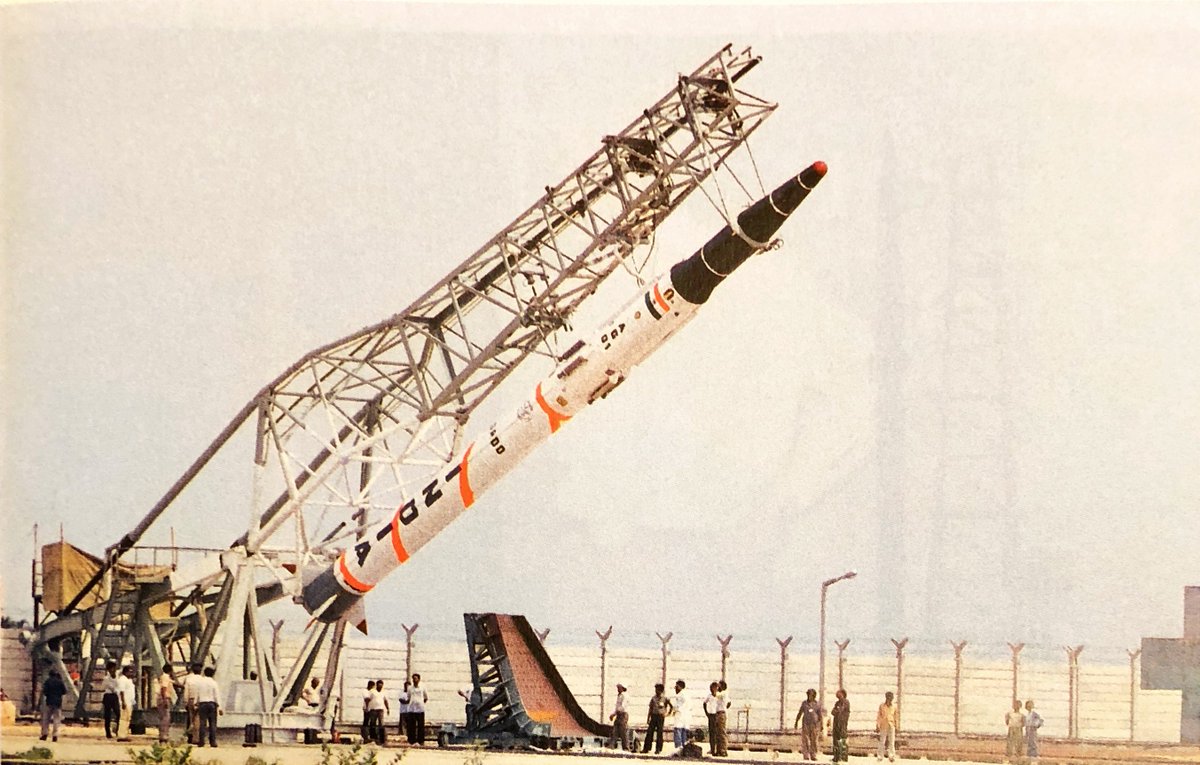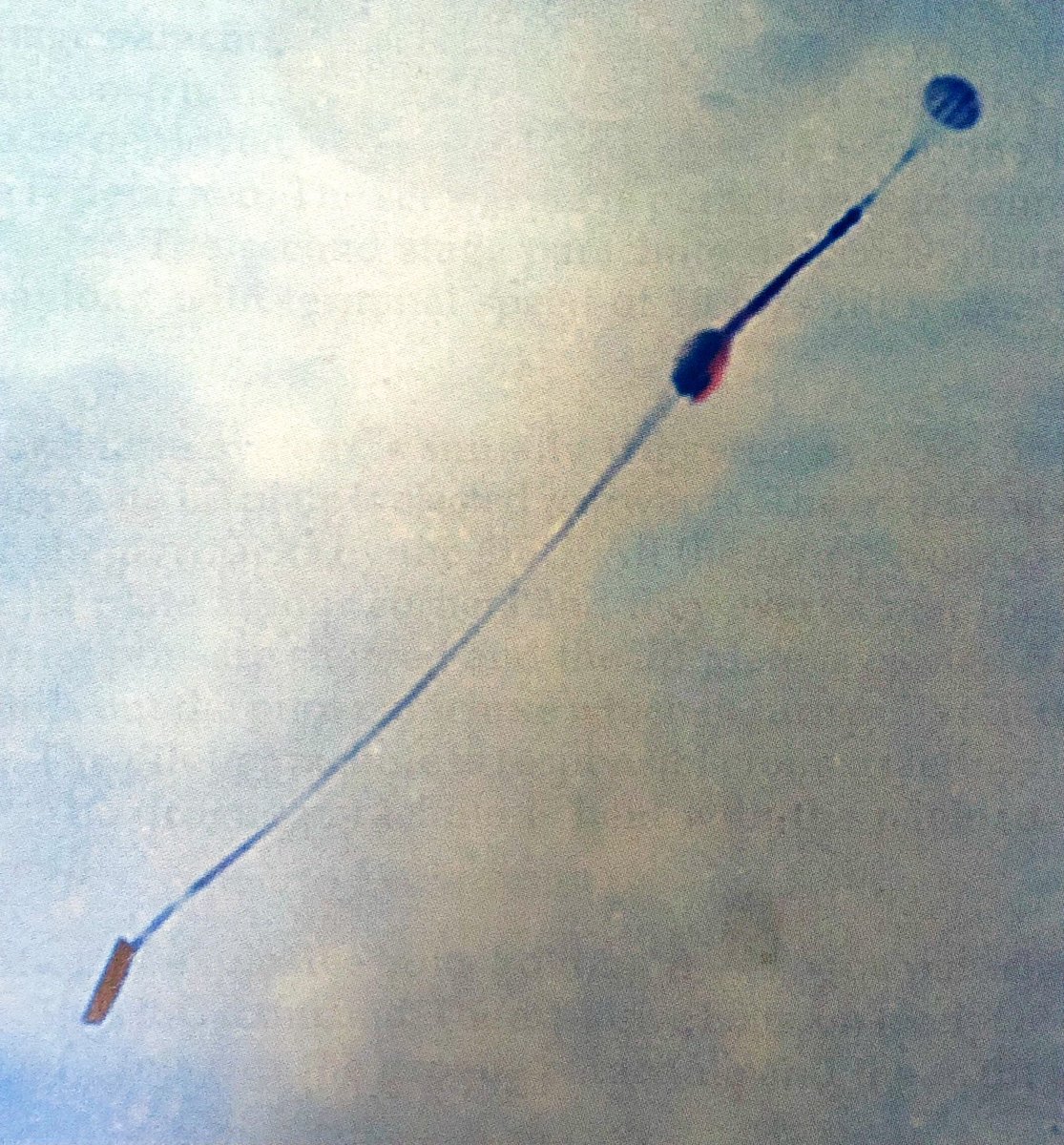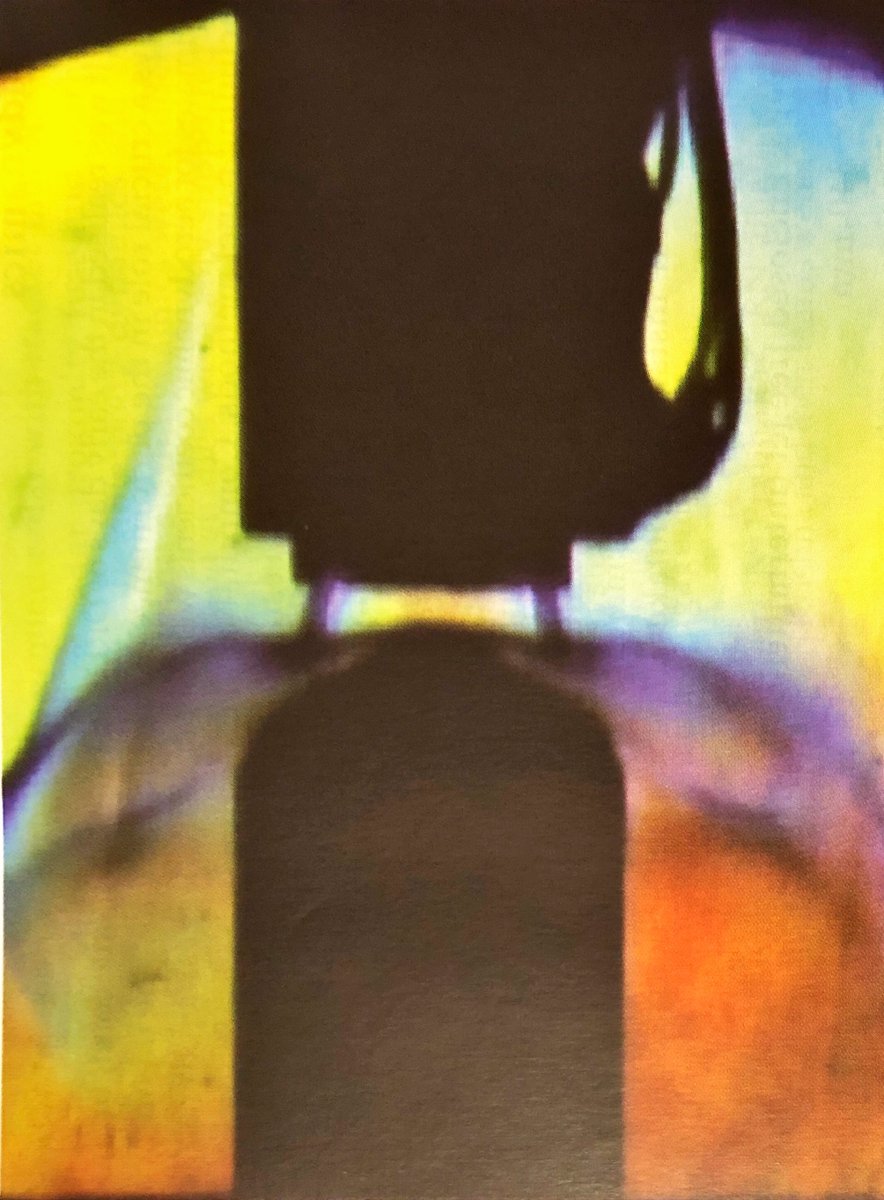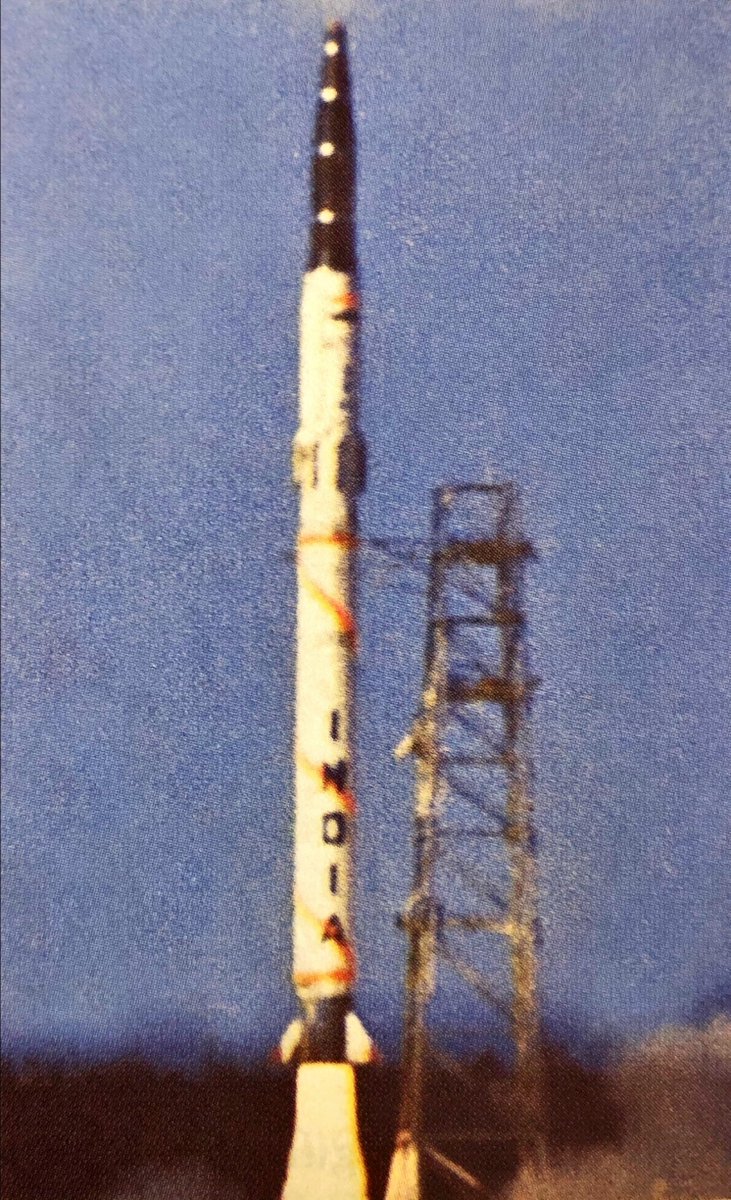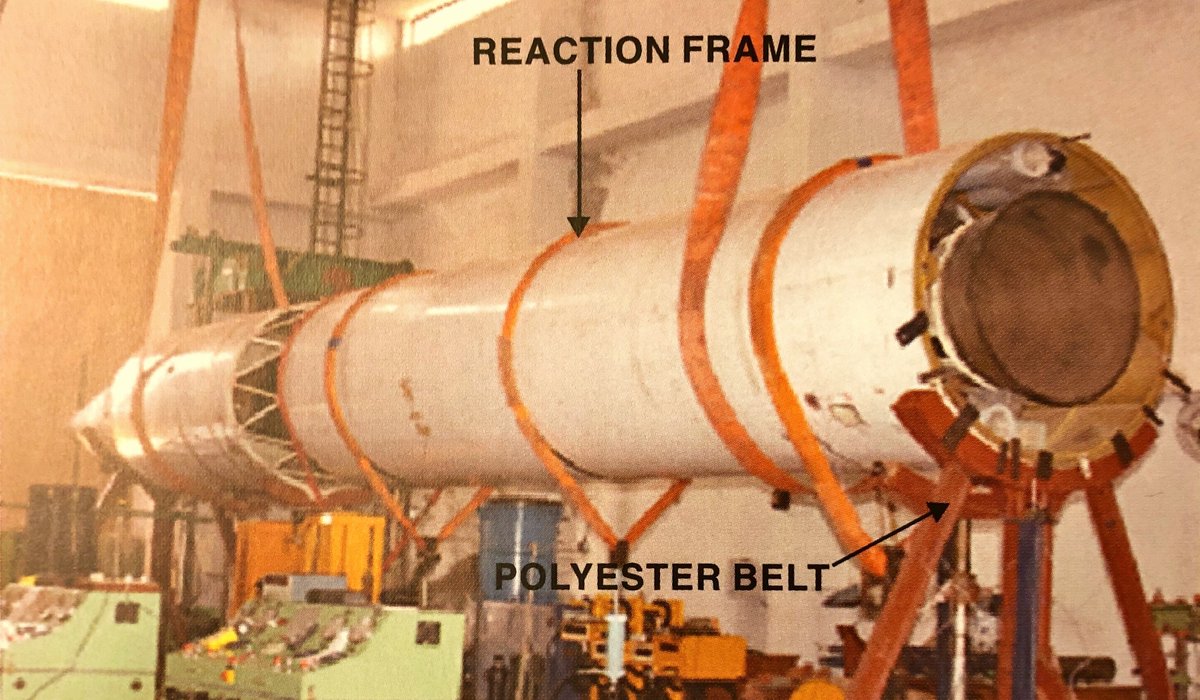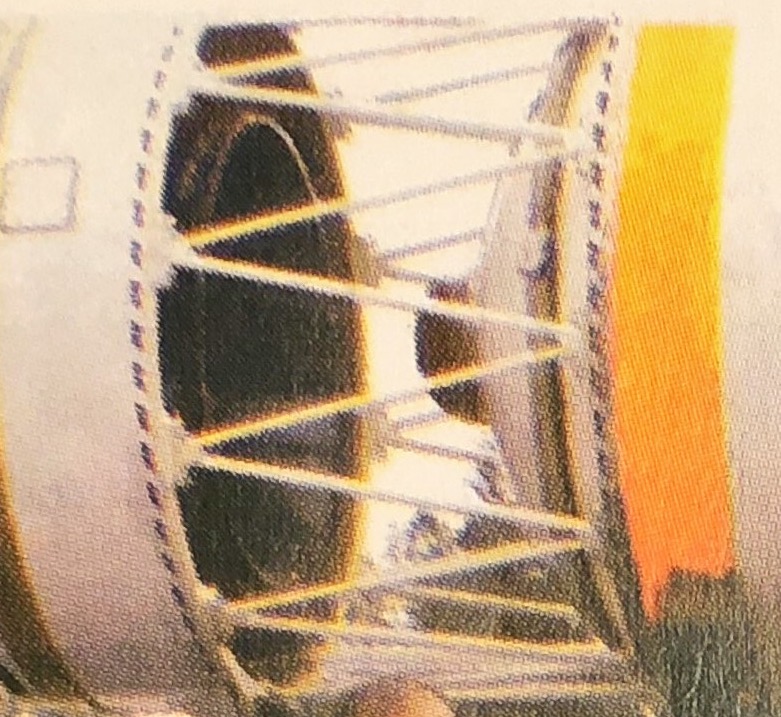Magnesium wing bay casting of India& #39;s Prithvi ballistic missile. Per DRDO:
"An attempt was made to source the materials like aluminum alloys, and magnesium alloy plates from abroad. Response was nil with not even an acknowledgement of the enquiries."
Photo: DRDO
"An attempt was made to source the materials like aluminum alloys, and magnesium alloy plates from abroad. Response was nil with not even an acknowledgement of the enquiries."
Photo: DRDO
More DRDO photos of Prithvi warhead testing. In developing the Prithvi& #39;s blast-fragmentation warhead, DRDO developed a new aluminized explosive (Dentex), and variable-sized fragment matrices, made so small pieces cover short range and large pieces go out further.
The blast-fragmentation warhead in question. A key technical problem to overcome was fragment spalling, which required new fragment matrices with different shock responses.
Three other warhead types: an incendiary/penetrator submunition, an incendiary/explosive submunition, and an explosive submunition payload.
The Prithvi motor was directly derived from the liquid-propellant motor used in India& #39;s Devil SAM. Contrary to popular belief, this wasn& #39;t a clone of the S-75. To appease the mil, DRDO agreed that Devil would look, handle, and behave like the S-75, but the internals were new.
The motor used something called "G-Fuel" (lmao), a 1:1 mixture of xylidene and triethylamine. The xylidene was initially produced at IPCL Patalaganga; pictured at left are DRDL& #39;s liquid propellant storage tanks.
The Prithvi engine would end up being the upper stage for the Agni I, albeit with modifications for high-alt use and a shorter burn time. 1st stage was off the shelf, from India& #39;s SLV-3. DRDO initially struggled to make aluminum plate and ring forgings for the liquid tanks.
Agni I used off-the shelf components because it was built to demonstrate advanced reentry technologies. Pictured: the RV& #39;s flap-and 2-stage parachute recovery system—first a ribbon chute, then a circular main chute.
DRDO claimed that India was "the first country to develop an all composite reentry vehicle structure" comprised of two layers of carbon fiber: an outer layer of carbon-phenolic and inner layer of carbon-epoxy bonded together, with a carbon-carbon nosetip.
They apparently developed 3D and 4D carbon-carbon matrices, which were also seen as useful for future MaRV development. https://twitter.com/divert_thruster/status/1187760731795668995">https://twitter.com/divert_th...
One problem with Agni I was the need for ullage motors to separate stages before 2nd stage ignites. This is why Agni 2, Agni 3 (?) feature an open interstage: the 2nd stage motors simply fire to separate.
After 2 launch scrubs, the first Agni flight took place on May 22, 1989. The Agni 2, with open interstage, MaRV, and other improvements, was first tested 1992 and failed due to unpredicted control-structure interaction. A third flight in 1994 was successful.
In their retrospectives, top DRDO/DRDL repeatedly mention the MTCR as a significant barrier. Efforts to develop indigenous IMUs took decades, starting in the 1970s, and the capacity to forge a 90 kg magnesium ring and machine it down to 7 kg needed to be developed from scratch.
A quote attributed to Dr. Abdul Kalam, father of India& #39;s indigenous missile development program:
"If the French could build this, why can& #39;t you?"
"If the French could build this, why can& #39;t you?"
Finally, some detail shots of the Agni III. Left: static testing rig. Right: second-stage motor nozzle. cc @annemp13

 Read on Twitter
Read on Twitter